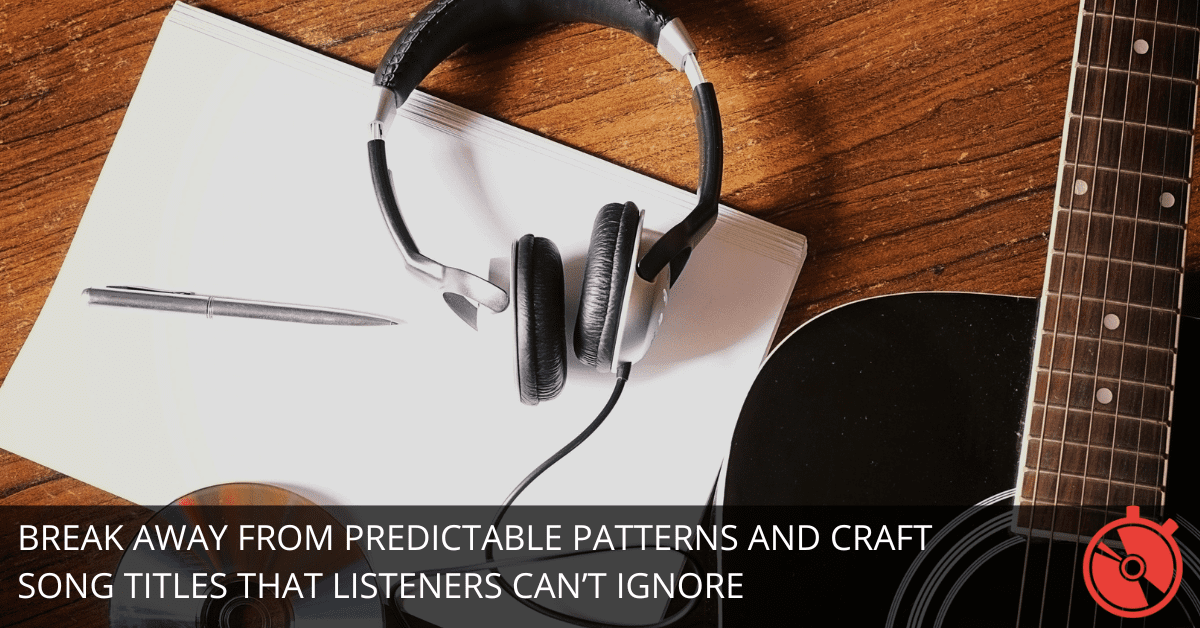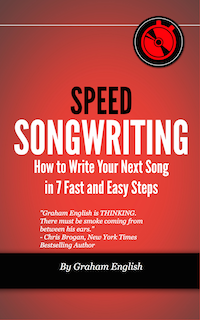
Why Standing Out Matters
Ever scroll through a music playlist and notice how many song titles sound eerily similar?
Words like “Love,” “Heart,” “Forever,” or “Goodbye” dominate, especially in genres like pop and R&B. Now, this is fine for established artists who can make almost any title work because their name alone grabs attention. But if you’re just getting started, blending into the title trends makes your song easy to ignore.
Standing out isn’t just about being catchy or clever; it’s about pulling listeners in by breaking the pattern they’re used to.
This technique is called “Zig When They Zag,” where you intentionally choose song titles that stand out by NOT following trends. Here’s how you can put this into action.
Step 1: Analyze Current Song Titles
First, you need a baseline. Spend some time scanning recent charts or playlists in your genre. Jot down common words, themes, and structures you see in song titles. You’ll start to notice patterns like one-word titles (“Stay,” “Sorry”) or overused themes like breakups and love stories.
For example, in pop, titles often reference emotions in a straightforward way—“Happy,” “Sad,” or “Lonely.” In country, you might see nostalgic or descriptive titles like “Homegrown” or “Blue Tacoma.” These observations will reveal what’s trending so you can consciously step outside of those boundaries.
Step 2: Identify What’s Missing
Now that you have a list of common words and themes, the next step is to look for gaps. What words, ideas, or angles aren’t showing up in these popular song titles? This could be an emotion that’s rarely explored or a less obvious metaphor.
If everyone’s singing about love, try thinking of words or themes that convey complex, layered emotions like anticipation, regret, or nostalgia. Or maybe focus on vivid imagery that paints a picture, like “Rust on the Handle” instead of “Sad Goodbye.”
By zeroing in on what’s missing, you open up creative possibilities that instantly give your song title a unique feel.
Step 3: Flip the Expected
One of the simplest ways to stand out is by flipping the expected. Let’s say you notice “stay” is a trending word in song titles. Instead of jumping on the bandwagon, try using a contrasting word like “leave,” “run,” or “escape.” This small twist makes your title instantly more intriguing.
For example, if “stay” titles are everywhere, you could go with “Gone by Morning.” Or if “heart” is a popular title word, swap it out for “stone” or “vein.” The goal is to create a title that feels fresh but still relatable. Just that small switch from “heart” to “stone” or “love” to “hate” can make your title stand out.
Step 4: Use Strong Visuals
Concrete images make song titles more memorable and evoke emotions faster. Think of a word or phrase that readers can see in their minds. A title like “Glass on the Pavement” or “White Knuckles” creates a mental image that sticks. Abstract titles like “Love and Pain” or “Broken Inside” tend to get lost because they lack a clear image.
Let’s take a title like “Lonely Night” and make it more vivid. Instead, try “Cold Sheets” or “City Lights at Midnight.” Both alternatives create visuals, making the title feel more specific and intriguing. Think of it like this: if your listener can almost feel or picture your title, you’re more likely to grab their attention.
Step 5: Use Unexpected Pairings
Another way to add depth and curiosity to your song titles is by combining words that don’t usually go together. This technique makes your title feel a bit mysterious and can encourage people to take a closer listen. Imagine titles like “Rust and Roses,” “Whiskey & Wind,” or “Plastic Paradise.”
These pairings hint at stories without spelling everything out, drawing the listener in to find out what the song is really about. Pair two contrasting images or ideas to add layers of meaning—like “Cold Fire” or “Silent Thunder.” The trick is to surprise so listeners feel compelled to dig into the story behind the title.
Step 6: Test the Sound and Rhythm
A title’s rhythm and sound are just as important as its meaning. Say your title out loud, and listen to its natural rhythm. A short, punchy title like “Bad Blood” lands differently than a softer, more melodic title like “Golden Silence.” The rhythm of your title should match the mood of your song.
For instance, if your song has a haunting, echoing sound, you might want a slower, flowing title like “Shadows on the Water.” If it’s upbeat, go for something quick and impactful like “Flash Fire.” Try out a few different title options, saying each one aloud to find the one that feels right.
Step 7: Don’t Be Afraid to Be Weird
Some of the most memorable song titles are downright weird. This doesn’t mean you have to go wild with random words. However, allowing yourself to embrace odd, quirky, or offbeat phrases can make your title unforgettable. Look at titles like “Hotel California,” “Smells Like Teen Spirit,” or “Bohemian Rhapsody.” None of these titles spell out the theme directly, but each one is iconic.
Don’t be afraid to try something that feels a bit strange or out of left field. If it makes people pause and wonder, it’s likely to stick with them. Push your own boundaries, and let the title capture curiosity as much as it does the song’s theme.
Make It Yours with These Templates
To get started on your own “Zig When They Zag” titles, here are a few fill-in-the-blank templates that create intrigue and help you break out of the title mold:
- “____ on the ____” (e.g., “Dust on the Highway” or “Lights on the River”)
- “____ and ____” (e.g., “Whiskey and Ash” or “Glass and Smoke”)
- “The Last ____” (e.g., “The Last Sunrise” or “The Last Songbird”)
- “____ by ____” (e.g., “Ghosted by Midnight” or “Broken by Dawn”)
- “When ____ Met ____” (e.g., “When Fire Met Rain” or “When Steel Met Rust”)
Play around with different combinations, keeping in mind the tone and rhythm of your song. These templates work well because they set a scene or create contrast, giving your title a unique identity.
Final Thoughts
The “Zig When They Zag” technique is a powerful, low-effort way to make your songs stand out. By analyzing what’s popular and consciously going in a different direction, you give your title an edge that listeners will notice. It’s not about just being different for the sake of it—it’s about crafting titles that feel fresh, compelling, and instantly memorable.
The next time you’re titling a song, resist the urge to follow the latest trends. Instead, ask yourself how you can create something that surprises, intrigues, or even confuses—just enough to make someone stop scrolling and press play. Try it with your next title and see the difference for yourself.

Enter your first name and email address below and click “GET ACCESS NOW!” to get the Speed Songwriting Cheat Sheet delivered to your inbox!
We guarantee 100% privacy. Your information will not be shared.

Leave a Reply